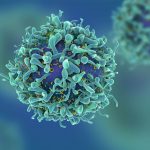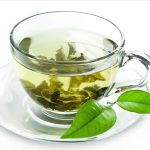
Women Put an Average of 168 Chemicals on Their Bodies Daily
Almost 13,000 chemicals are used in cosmetics, and only about 10 percent have been evaluated for safety.Although the US Food and Drug Administration (FDA) has the authority to regulate harmful ingredients in cosmetics and personal care products, they don’t often exercise it. Further, cosmetics can come on the market without any type of approval necessary.
Only after a product is deemed to be harmful, adulterated, or misbranded can the FDA take regulatory action. According to the FDA: ÒFDAÕs legal authority over cosmetics is different from our authority over other products we regulate, such as drugs, biologics, and medical devices. Under the law, cosmetic products and ingredients do not need FDA premarket approval, with the exception of colour additives. However, FDA can pursue enforcement action against products on the market that are not in compliance with the law, or against firms or individuals who violate the law.Ó Adding insult to injury, the FDA tasks the companies that manufacture and market cosmetics with ensuring their safety. Not only does this pose an obvious conflict of interest, but Òneither the law nor FDA regulations require specific tests to demonstrate the safety of individual products or ingredients.Ó And, Òthe law also does not require cosmetic companies to share their safety information with FDA. ÒSo, while cosmetics companies are responsible for substantiating the safety of their own cosmetics, there are no required tests to do so and they donÕt have to share safety data about their products. The FDA isnÕt even authorised to order recalls of hazardous chemicals from the market.
What does this mean for a health-conscious person like yourself? When you use body lotion, deodorant, shampoo, or nail polish, your taking a chance that your applying harmful chemicals to your body, even if the products claims to be non-toxic and safe.
How Many Chemicals Does Your Beauty Routine Expose You To?
The average US woman uses 12 personal care products or cosmetics a day, containing 168 different chemicals, according to the Environmental Working Group (EWG). While most men use fewer products, they are still exposed to even more. Clearly, such chemicals exposures are not insignificant, especially when they occur virtually daily for a lifetime. When EWG tested teens to find out which chemicals in personal care products were found in their bodies, 16 different hormone-altering chemicals, including parabens and phthalates, were detected. The are other chemicals risks as well. For instance, in 2000 the EWG released a study showing that 37 nail polishes from 22 companies contains dibutyl phthalate (DBP). Dbp is known to cause lifelong reproductive impairments in male rats, and has been shown to damage the testes, prostate gland, epididymus, penis, and seminal vesicles in animals. Its used in nail polish because it increases flexibility and shine, but research by the US Centres for Disease Control and Prevention (CDC) revealed that all 289 people tested had DBP in their bodies. Worse still, this chemical, which is linked to birth defects in animals, was found at the highest levels in women of childbearing age. Meanwhile, in the report ÒHeavy Metal Hazard: The Health Risk of Hidden Heavy Metals in Face Makeup,. Environmental Defense tested 49 different makeup items, including foundations, concealers, powders, blushers, mascaras, eye liners, eye shadows, lipsticks, and lip glosses. Their testing revealed serious heavy metal contamination in virtually all of the products:
¥ 96 percent contained lead
¥ 90 percent contained beryllium
¥ 61 percent contained thallium
¥ 51 percent contained cadmium
¥ 20 percent contained arsenic
Everyday Chemical Exposures Linked to Earlier Menopause
In a study of more than 31,000 US women, researchers examined blood and urine levels of 111 mostly man-made chemicals commonly found in plastics, personal care products, and household items, as well as which may
contaminate air, water, and soil. As Science Daily
reported, the chemicals tested included:
Dioxins/furans
(industrial
combustion
By products)
Phthalates (found in
plastics, common
household items,
pharmaceuticals,
and personal care
products including
lotions, perfumes,
makeup, nail polish,
liquid soap, and hair
spray)
Phytoestrogens
(plant-derived
estrogens)
Polychlorinated
biphenyls (PCBs,
coolants)
Phenolic derivatives
(phenols, industrial
pollutants)
Organophosphate
pesticides
Surfactants Polycyclic aromatic
hydrocarbons
(combustion
products)
Women with higher levels of the chemicals in their bodies were found to experience menopause two or four years earlier than women with lower levels. Fifteen chemicals in particular (including nine PCBÕs, three pesticides, two phthalates, and a furan) were significantly associated with early menopause, which suggests an early decline in ovarian function.
In addition to leading to early menopause, an early decline in ovarian function may lead to early development of heart disease and osteoporosis. Many of the chemicals mentioned in the study have already been linked to health risks, including cancer, metabolic syndrome, and early puberty.
Senior author Amber Cooper, MD, an assistant professor of Obstetrics and Gynecology at Washington University School of Medicine, told Science Daily:
ÒChemicals linked to earlier menopause may lead to an early decline in ovarian function, and our results suggest we as a society should be concernedÉ Earlier
menopause can alter the quality of a woman’s life and has profound implications for fertility, health, and our societyÉ this study doesn’t prove causation, but the associations raise a red flagÓ
What Are Some of the Most Toxic Chemicals in Your Cosmetics?
A handful of the most hazardous chemicals found in many personal care products and cosmetics include:
¥ Paraben, a chemical found in deodorants, lotion, hair products, and cosmetics, has been shown to mimic the action of the female hormone estrogen, which can drive the growth of human breast tumors. A study published in 2012 suggested that parabens from antiperspirants and other cosmetics indeed
appear to increase your risk of breast cancer. The research looked at where breast tumors were appearing and determined that higher concentrations
of parabens were found in the upper quadrants of the breast and axillary area, where antiperspirants are usually applied. ¥ Sodium lauryl sulfate, a surfactant, detergent, and emulsifier used in thousands of cosmetic products,
as well as in industrial cleaners. It’s present in nearly all shampoos, scalp treatments, hair color and bleaching agents, toothpastes, body washes and cleansers, make-up foundations, liquid hand soaps, laundry detergents, and bath oils/bath salts. ¥ The real problem with SLES/SLS is that the manufacturing process (ethoxylation) results in SLES/SLS being contaminated with 1,4 dioxane, a carcinogenic by-product. ¥ Phthalates are plasticizing ingredients that have been linked to birth defects in the reproductive system of boys and lower sperm-motility in adult men, among other problems. Be aware that phthalates are often hidden on shampoo labels under the generic term “fragrance.”
¥ Methylisothiazolinone (MIT), a chemical used in shampoo to prevent bacteria from developing, which may have detrimental effects on your nervous system.
¥ Toluene, made from petroleum or coal tar, and found in most synthetic fragrances and nail polish. Chronic exposure linked to anemia, lowered blood cell count, liver or kidney damage, and may affect a developing fetus.
Slash Your Chemical Exposures with These Simple Tips The Environmental Working Group has a great database to help you find personal care products that are free of potentially dangerous chemicals. Products bearing the USDA 100% Organic seal are among your safest bets if you want to avoid potentially toxic ingredients. Beware that products boasting “all-natural” labels can still contain harmful chemicals, so be sure to check the full list of ingredients. Better yet, simplify your routine and make your own products. A slew of lotions, potions, and hair treatments can be eliminated with a jar of Organic coconut oil, for example, to which you can add a high-quality essential oil,
if you like, for scent.
It’s important to remember that your skin is your largest, and most permeable organ. Just about anything you put on your skin will end up in your bloodstream and distributed throughout your body. Once these chemicals find their way into your body, they tend to accumulate over time because you typically lack the necessary enzymes to break them down.
This is why I’m so fond of saying “don’t put anything on your body that you wouldn’t eat if you had to.” What you’ll notice if you browse through the ingredients in any of my personal line of natural skin care products is just that ingredients youÕll know and recognize, like organic coconut oil, orange oil, or rosemary extract.
Whether you make your own or switch to a truly natural,toxin-free brand, there are alternatives to the common, and often toxic, products that line drug store and beauty store shelves and you might even find that you live them better than your old brand. There’s no reason not to be questionable about chemicals that you put onto your skin every day, and the more people who demand better the more the industry may be forced to ditch their toxic ingredients and change.



